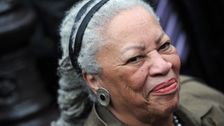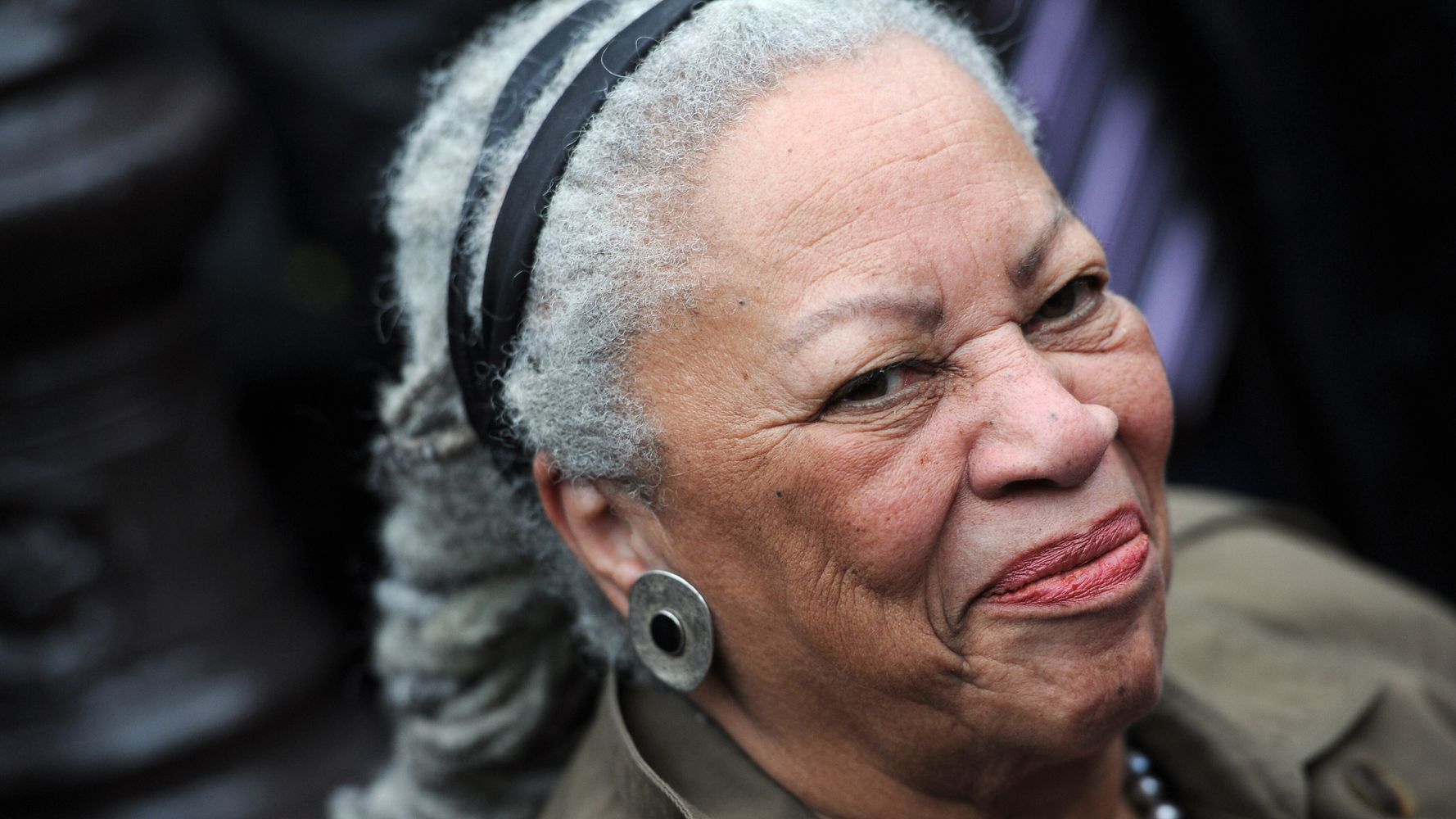[ad_1]

The world lost one of its most important voices Monday when literary icon Toni Morrison died at age 88.
Morrison’s works are invaluable. Born Chloe Ardelia Wofford in Lorain, Ohio, in 1931, she chronicled experiences through Blackness like no one had done before. Like no one else has yet to do.
Throughout her career, she’s authored both novels and essays and elevated the voices of other Black writers and notable figures into mainstream publishing, including Angela Davis, Muhammad Ali and many others. She earned 1988′s Pulitzer Prize in fiction for “Beloved” and became the first Black woman to win the Nobel Prize in Literature in 1993. Her work became the blueprint for writing about Black life (and pain) without concern for the white gaze.
Until this year, no film had highlighted Morrison and her legacy. Since 2015, her longtime friend and photographer, Timothy Greenfield-Sanders, crafted the first documentary about her, “Toni Morrison: Pieces I Am.” The film’s name comes from a passage in “Beloved″: “The pieces I am, she gather them and gave them back to me in all the right order.”
Greenfield-Sanders tells Morrison’s story quite literally through “pieces” of her life, from her upbringing to her time at Washington’s Howard University to her frequent challenges being taken seriously in the publishing industry. The film includes testimonies from Davis, Oprah Winfrey and Sonia Sanchez, icons in their own right. Morrison’s own voice led the film, and she recounted her life experiences as she spoke directly to the camera (the other participants spoke off-camera, a deliberate choice).
After her death was announced, Greenfield-Sanders told IndieWire that Morrison was “a treasured collaborator, a monumental inspiration and, most importantly, a cherished friend.”
“We will all miss her, but the gifts she left us — her written works that have transformed so many lives around the world — live on…to educate, empower and nourish us,” he said. “For this and all she shared with us, I say thank you, Toni.”
During a post-screening conversation at New York’s Film Forum in June, Greenfield-Sanders told HuffPost of Morrison’s response to his cinematic homage: “I like her.”
Below is a condensed version of that conversation in which Greenfield-Sanders discusses how he persuaded the once-reluctant Morrison to let him tell her story, how the literary world tried to diminish her work and how she was able to tell her own story through this film.
You said that there was some hesitation when you first brought the idea of a documentary to her. What was your relationship with her like? How did you convince her to let you make this film?
Timothy Greenfield-Sanders: Charm. I first met Toni in 1981; she came into my studio in the East Village for a portrait. It was around the time of her novel “Tar Baby,” and as a young photographer starting out, we became friends that day. I remember her being incredibly … as confident as she is [in this film]. I remember this presence in the studio and as a photographer you kind of read people, you see the way they come into the studio. Are they nervous? What do they need? Toni didn’t need anything; she was just, “I’m here, let’s do it.” She was smoking a pipe.
And over the years, I became her photographer and a kind of friendship developed and I started to do her book covers and press pictures and all of that stuff and we became friends. And the Blacklist series I did; the nine films on identity starting with the Blacklist was inspired by Toni. It came out of a lunch in 2005 in my kitchen. We were doing pictures for “Margaret Garner,” the opera Toni had written the libretto for (and the same women who inspired “Beloved”). And Toni said, “We should do a book on Black divas.” And that idea became the Blacklist; it kind of morphed into this examination of talent and struggle and achievement within the Black community that started all of those films.
Toni was the first to sit for it. I felt a couple of years ago an urgency was coming on, Toni was in her early 80s and when I asked her about it she didn’t say no, which is a yes. You know no is a hard no, you’re done, and she was more concerned about what time it would take away from her own work, you know, and I said “No, … it’s going to be fun, we’re going to come to you, we’re going to interview you and then interview a list of people.”
And so we worked on that together. I had a long list; Toni had a very sharp red editing pencil. And then she agreed to do it, and we jumped into making it happen.
And, thankfully for us all she agreed to do it. Morrison’s work is the blueprint for how we view work, Black work that is absent of the white gaze. She addresses that in the film and I’m curious how you, as a white man, de-centered yourself and really made sure that she had control of this film? Especially given that her work is very much driven by the fact that she is a Black, HBCU-educated woman from Ohio.
Greenfield-Sanders: A lot of things I did, very conscious of my own white male gaze. A radio person was interviewing me and said, “And he has blue eyes as well.” Toni trusted me, that was a very enormous thing in my favor. I felt that also as her photographer, the way I shot Toni is looking right at you, she was looking at the camera and the other people are looking off camera so it was a way to feel and really allow Toni to tell her story directly.
So I’m not telling it ― Toni is there saying what she wants to say and the other people are sort of augmenting it. On top of that, we brought in all these tremendous talents, like Mickalene Thomas who did the opening montage and the 25 African American artists whose work is in the film. I called Mickalene up … and I explained what I wanted to do. I was doing a film on Toni Morrison and she just said, “I’m in.” And that was the reaction from all of these artists because Toni means so much to them and they learn so much from her, they wanted to give back to her in some way. Everybody was just eager. Like Kathryn Bostic, who wrote all the music, this particularly beautiful score for this film.
One thing that was surprising was seeing some of the more intimate details, getting into not only her writing process but also her editing process and seeing her notes. How were you able to get those intimate details?
Greenfield-Sanders: Johanna Giebelhaus, the editor and the chief researcher, ran out to Lorain, Ohio, and got pictures that no one had ever seen from the historical society in the little boxes that just were kind of buried there, amazing pictures. She went to Princeton where those notes are in the archive; it was a treasure trove of stuff. Just to see the structure of how Toni writes, it’s so fascinating, even to Toni scholars who haven’t seen those, just incredible.
All of the archives, it was a lot of work and a lot of choices to try and pick what’s the best thing here.
I would love to hear about your approach in addressing the criticism that she faced, the story of Black brilliance not getting its just due is a story as old as racism and Ms. Morrison was unfortunately one of the many victims of that. What was that process like?
Greenfiled-Sanders: Well, it’s particularly highlighted in the Nobel section when she’s won the greatest award there is and then the next day is this article in The Washington Post that is so appalling and misogynist and racist. Just terrible things being said about her at the moment she’s being honored. We couldn’t leave that out; we had to show here she is getting this honor, you’re all happy and then all of a sudden, wow.
This film is titled “Pieces I Am.” With a life as vast as Morrison’s, how did you land on the best way to arrange this film?
It was very complicated to figure out where we would start and where we would end and how we would do this, and what we ended up doing was creating these sort of sections, like a pod on Lorain, and a piece on the Nobel and something on The Bluest Eye.
And so we created 25, 30, 40 different little pieces that we fully edited and then figured out what would follow this one, what would follow that one? And then we strung them together and did our first cut that way. …Someone came in to see it and I said, “Well we don’t really have it strung out yet, it’s still just pieces.” Which was very frustrating, but once we strung it together and we sat and watched it for the first time it was like, ha, it’s working, it’s amazing. And then you could kind of move a piece around; I had never done a film that way, but it worked in this case.
On top of that is it reflects the title, The Pieces I Am. The Pieces I Am, you know plays with the opening montage. Toni writes this way, Toni moves all over the place, and the characters, the narrator changes constantly and you’re not linear. We didn’t want to be like, “She’s born here and she goes here and she’s here,” we didn’t want to do that.
This interview has been lightly edited for brevity and clarity.
REAL LIFE. REAL NEWS. REAL VOICES.
Help us tell more of the stories that matter from voices that too often remain unheard.
[ad_2]
Source link

